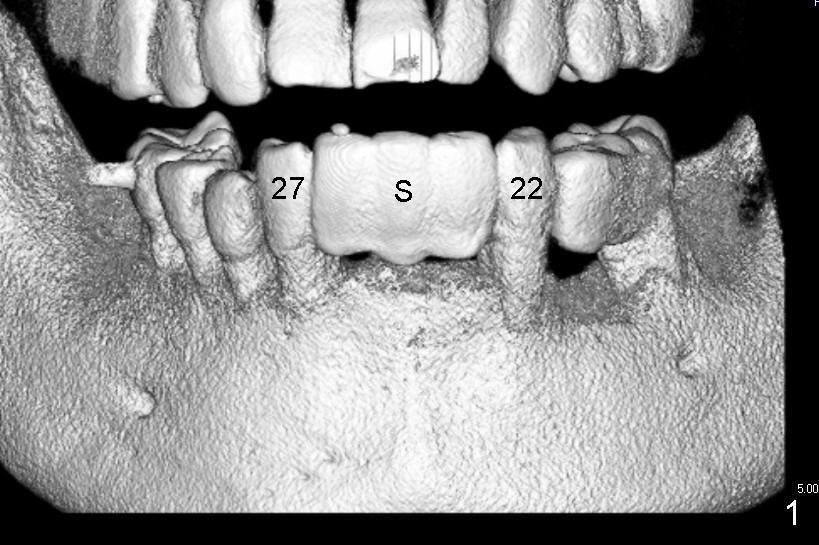
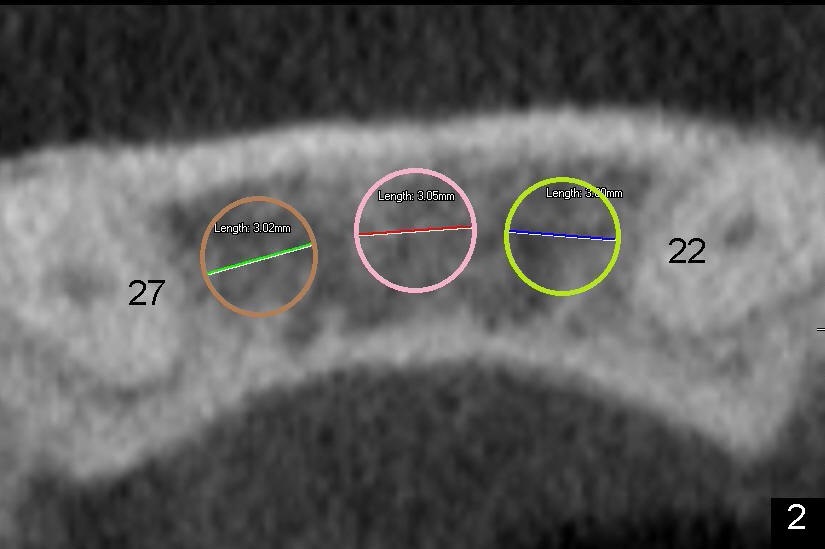
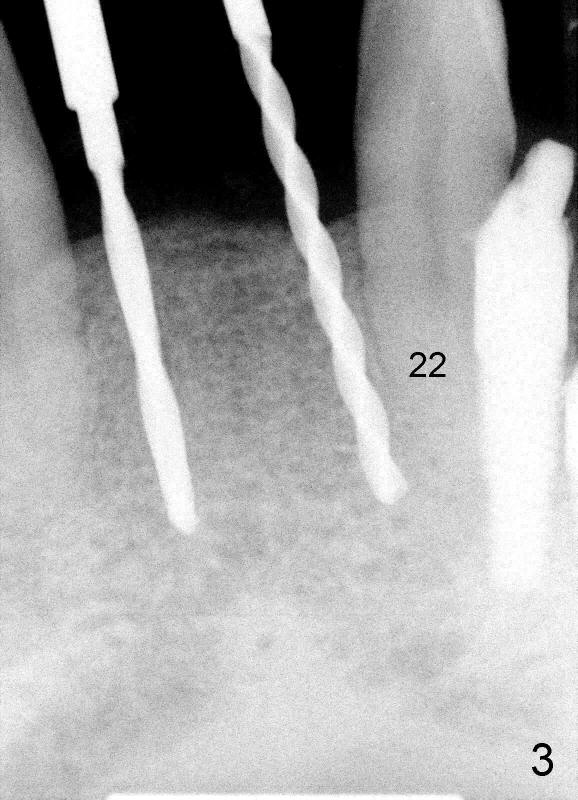
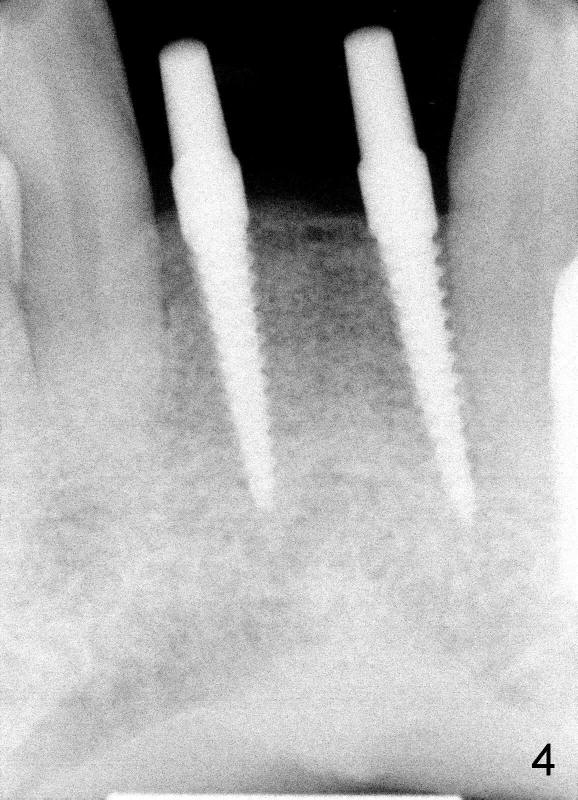
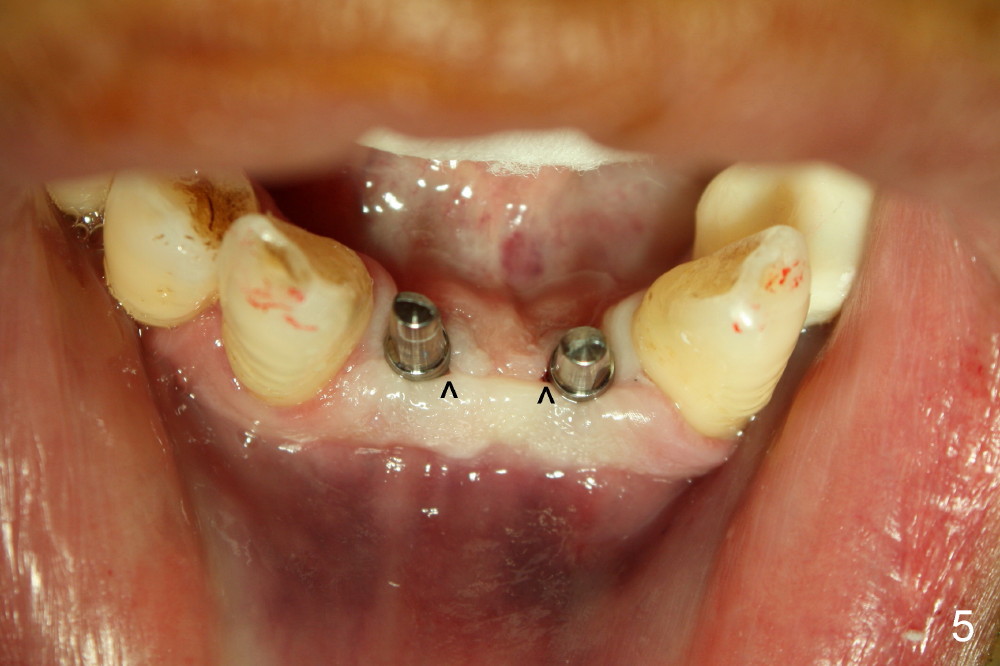
 |
 |
|
 |
 |
 |
Why and Where to Use One Piece Implants?
The mandibular incisors and maxillary lateral incisors are the smallest teeth in the mouth. The corresponding implants should be small in diameter. When an implant is less than 3.5 mm in diameter, there is not enough space (implant well) to hold a separate abutment (unipost). They are easily detached from each other if we restore them traditionally.
Therefore one piece implants are born. The drawback of them is that we cannot change the angle of the abutment. To overcome this shortcoming, angulated one piece implants are manufactured (15 degree, CBA).
Kent has lost four of the lower incisors (Fig.1 between #22 and 27, S: stent for CT scan). It is planned to place two or three 3.0 mm one piece implants (Fig.2 axial section at root level). Intraop PA shows that one of 1.5 mm pilot drills is close to #22 (Fig.3). The trajectory of this osteotomy was then changed with difficulty; the final PA shows two of 3.0x17 mm one piece implants (Fig.4). Postop, the patient is doing fine. To get the best trajectory, we will penetrate the bone half distance of the intended length with 1.5 mm pilot drills, take PA to see how the angulation is and how close to the adjacent tooth and finish the osteotomy appropriately.
Fig.5 shows one piece implants after preparation and temporary crown fabrication (note articulation paper marks). The small wound openings mesial to the implants (^) are probably to due to #15 scalpel slit and minor tear of implant placement.
Xin Wei, DDS, PhD, MS 1st edition 08/18/2013, last revision 08/18/2013